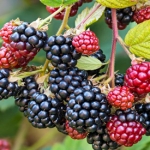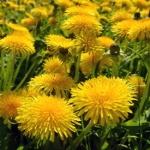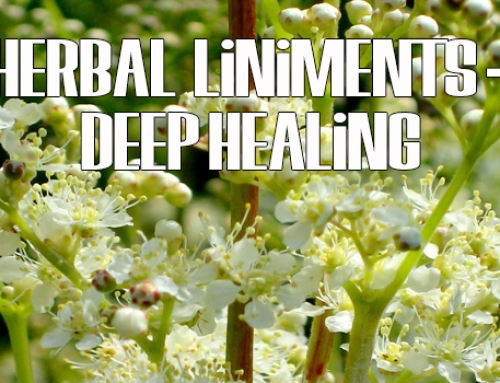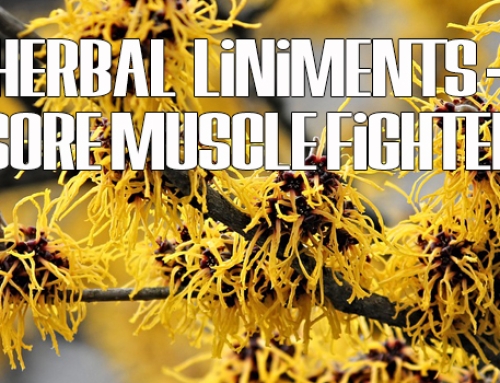In the days before grocery stores the only way you could get things on their dinner table, was to grow it, look for it, or forage for it. To live longer you needed to know what was edible, what was not and what plants in the world can do for you. You had to be able to correctly identify the plants – it was a matter of life or death, literally.
Today, no one can to save their life! Most of us can’t tell what plants could be beneficial or harmful to us. We have gotten too used to getting what we eat or need for our health to walk into a store and get it off the shelf. How can you live, let alone live somewhat comfortably if you cannot do even the essentials for sustenance?
You need to know what plants, that are in the region IN WHICH YOU RESIDE, that can be to have any hope to what will be the norm when distribution channels go down or fiat money is no longer viable.
Edible Wild Plants
It’s not the case, that you can go out to the yard and grab a handful of grass or leaves. Truly edible wild plants have much more nutrients than their domestic counterparts – if there is one. Wild plants have survived on their own without the help of modern agricultural practices, meaning they haven’t been manipulated to grow a certain way. Only the strongest wild plants survived, leaving the best, and most nutritious of the line to continue the species. Keep in mind that every domestic plant has it’s beginning from an edible wild plant.
The problem is how to distinguish a wild plant that can save your life from another that is poisonous. Generally speaking, you stay away from mushrooms, of any kind. But you also have to be weary of umbrella shaped flower clusters, bulbs resembling onions or garlic, carrot like leaves/roots, bean and pea like fruits, plants with shiny leaves or fine hairs. Unfortunately, this list also eliminates many very beneficial edible wild plants, but it will help you to avoid some very dangerous poisonous ones as well.
Also these 5 edible wild plants can save your life during a food crisis. There are countless instances that have shown by so doing – being able to forage in the wild (like the Holodomor 1932-1933 Ukrainian Famine) many people survive the food crisis by moving to the woods or the wild parts of the country.
 1. Blackberries
1. Blackberries
There are many wild berries not safe for human consumption. Wild blackberries are 100% edible and easy to recognize. Found all over America. Don’t confuse raspberries with wild blackberries. The blackberry’s stem also come off the branch whilst a raspberry’s doesn’t. Further, blackberries have red branches with long thorns with wide, jagged green leaves. They have white, 5-petaled flowers.
 2. Dandelion
2. Dandelion
Dandelion is extremely common in the wilderness. These wild plants have a rosette base with lots of flower stems and leaves. The toothy leaves are usually between 2-11 inches long. The flower is easily distinguished with its yellow color and rosette look head. All the parts of this plant are eatable. The mature leaves may taste bitter though, so boil them first. The root should also be boiled first before eaten.
 3. Pineapple weed
3. Pineapple weed
This is often mistaken for chamomile. Chamomile does not emit a pineapple smell when crushed. Found in sandy locations in the wilderness; the hairless leaves look like feathers and are about 1 inch long. It is a low growing wild plant. The yellow-greenish flowers are cone shaped. Leaves and flowers can be eaten. Leaves can also be used for making tea.
 4. Cattail
4. Cattail
It has a brown cigar shaped head that stands on top of a very long stem. Cattails can grow up 6 feet. The leaves are linear and flat. They are around 3mm wide. They are usually found close to wetlands. The underground rootstock can be boiled or eaten raw. The stem can also be eaten raw or cooked with especially the white part at the bottom being tasty. You can boil the leaves as spinach. The flowers can be roasted and eaten
 5. Plantain
5. Plantain
Plantain can be found in almost any state. Essentially a weed, but can be eaten. Broadleaf plantain has green oval leaves. The leaves have thick stems. Long pointed green flowers grow from the stem. The leaves grow in a rosette and can be from 1-12 inches in length. Pick the green leaves and cook them or eat them raw.
Healing Wild Plants
Your health in the past was determined how well your mother or grandmother knew about the healing powers of the local fauna. Before medical breakthroughs of the 20th century, which were derived from such knowledge, mankind had a long history of using indigenous, or native, plants for a wide variety of medicinal purposes. At times, some of these methods are being used even today to treat patients but not often enough.
Medicinal plants and their applications are as diverse as the people who use them. In the wilderness or in a major catastrophe situation getting a disease of any type can be crippling and deadly. You need to have basic medical/triage/first aid training if you have any chance of making it once medical attention is much harder to get. Infections can strike your immune system and leave you out to dry. If you have no medication you can always turn to wild plants that can save your life. But would you know what plants and natural herbs can cure you?
Before antibiotics there was garlic. Garlic was used to cure almost any kind of infection from dysentery to influenza. This immune system booster contains powerful sulfur compounds that fight infections. The sulfur compounds in garlic act as antibiotics almost as strong as penicillin.
 1. Stinging nettle
1. Stinging nettle
Most people must have been stung by the stinging nettle. It is found all over. It has sharp, stingy hairs and small white flowers. When collecting this plant, please ensure that all exposed skin is covered. It has an itchy, burning sting to it which might last for a couple of hours, even days. Use the leaves and boil them in water when you get bladder infection and can’t urinate whilst hiking or camping. You can boil the roots to increase the effect. Also eatable!
 2. Mullein
2. Mullein
These wild plants are found all over America. In its first year it has a rosette of soft leaves. In its second year Mullein has a long stem with small yellow flowers and soft leaves. The leaves can grow up to 19 inches long. The plant itself can grow over 6 feet high. The leaves can be used as a poultice for back pain. Boil water and place leaves inside. Let it simmer for two minutes, and then apply the leaves directly on pain.
 3. Aloe vera
3. Aloe vera
It is a succulent plant species. It has a short stem and a rosette of leaves. It produces yellow flowers on a stick like stem. Aloe vera is used in many remedies. Out in the wild the gel of the leaves can be used as anti-septic for cuts, scrapes and burns. Aloe vera helps eliminate dry skin and sun burn as well. This wild plant that can save your life as a remedy is also edible. However, take caution: eating the wrong part of the Aloe vera plant will result in severe vomiting, loose stool, and painful bowel movements. Avoid the green-yellow part of the plant that can be found at the bottom of the plant’s stalk. Remove the skin and inner layer of juice and you will find a very important, highly coveted gel substance.
 4. Yarrow
4. Yarrow
It grows throughout America and typically found in fields and meadows. The plant grows up to 3 feet high and has white, clustered flowers on the top of the stalks. The flower can be boiled in water and the extract drank for headaches, diarrhea and flu. The yarrow tea prevents clotting so do not drink it if you have a bleeding wound.
 5. Comfrey
5. Comfrey
Found throughout America, it has a distinctive purple or white bell shaped flowers. It is a rough, hairy wild plant found close to water. The plant’s leaves can be used to make a tea and applied locally to treat insect bites, stings, burns, irritated skin, inflamed skin or wounds. Do not drink the tea, Sop it into a compress thoroughly and reapply as you need.
The TakeAway
When it comes to your health, it is only at your fingertips IF you know what to look for and how to use it. You can take what nature was set up to do for us, and promote a healthy lifestyle, before an ailment hits you and when you feel the effects coming over you. Take the time today and learn the what’s and how’s of using plants for your sustenance.


 1. Blackberries
1. Blackberries 2. Dandelion
2. Dandelion 3. Pineapple weed
3. Pineapple weed 4. Cattail
4. Cattail 5. Plantain
5. Plantain 1. Stinging nettle
1. Stinging nettle 2. Mullein
2. Mullein 3. Aloe vera
3. Aloe vera 4. Yarrow
4. Yarrow 5. Comfrey
5. Comfrey



